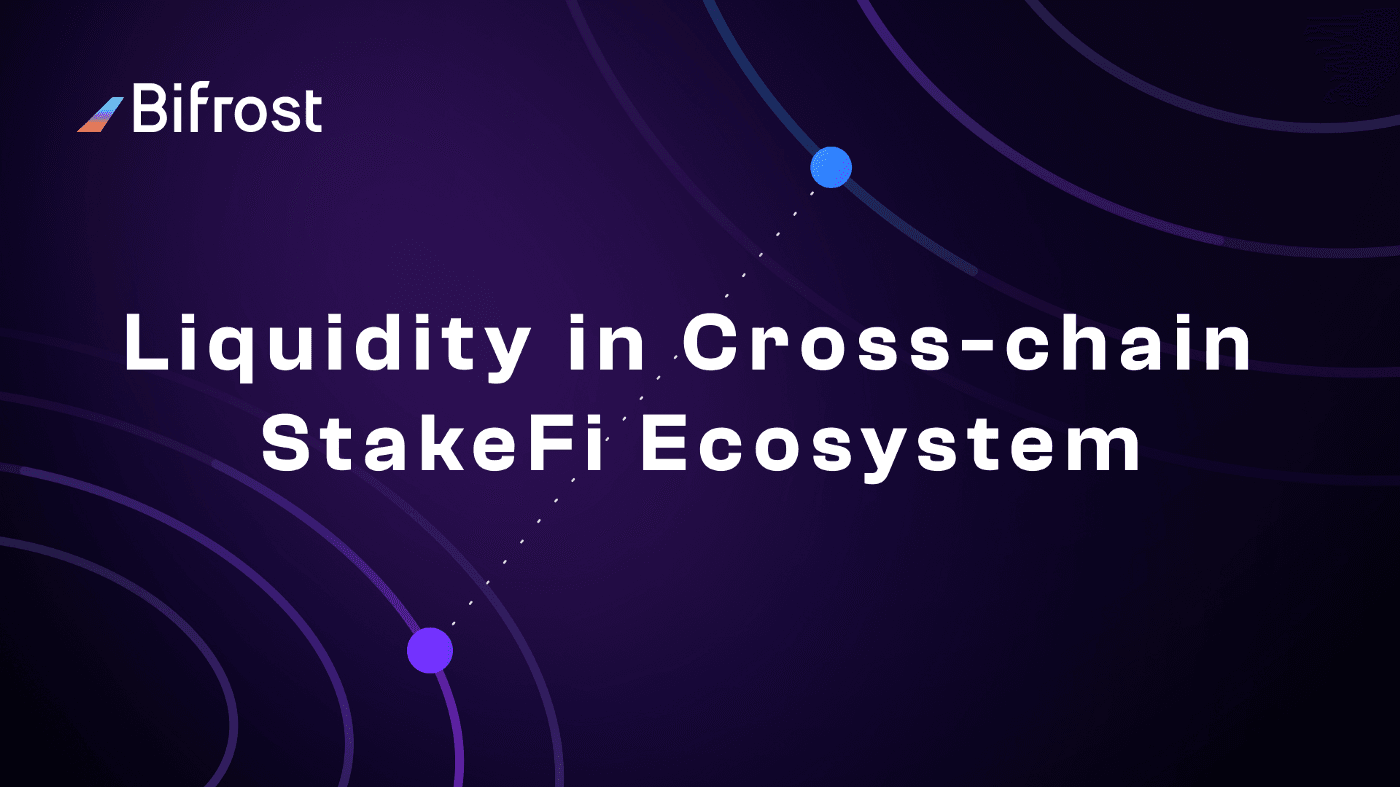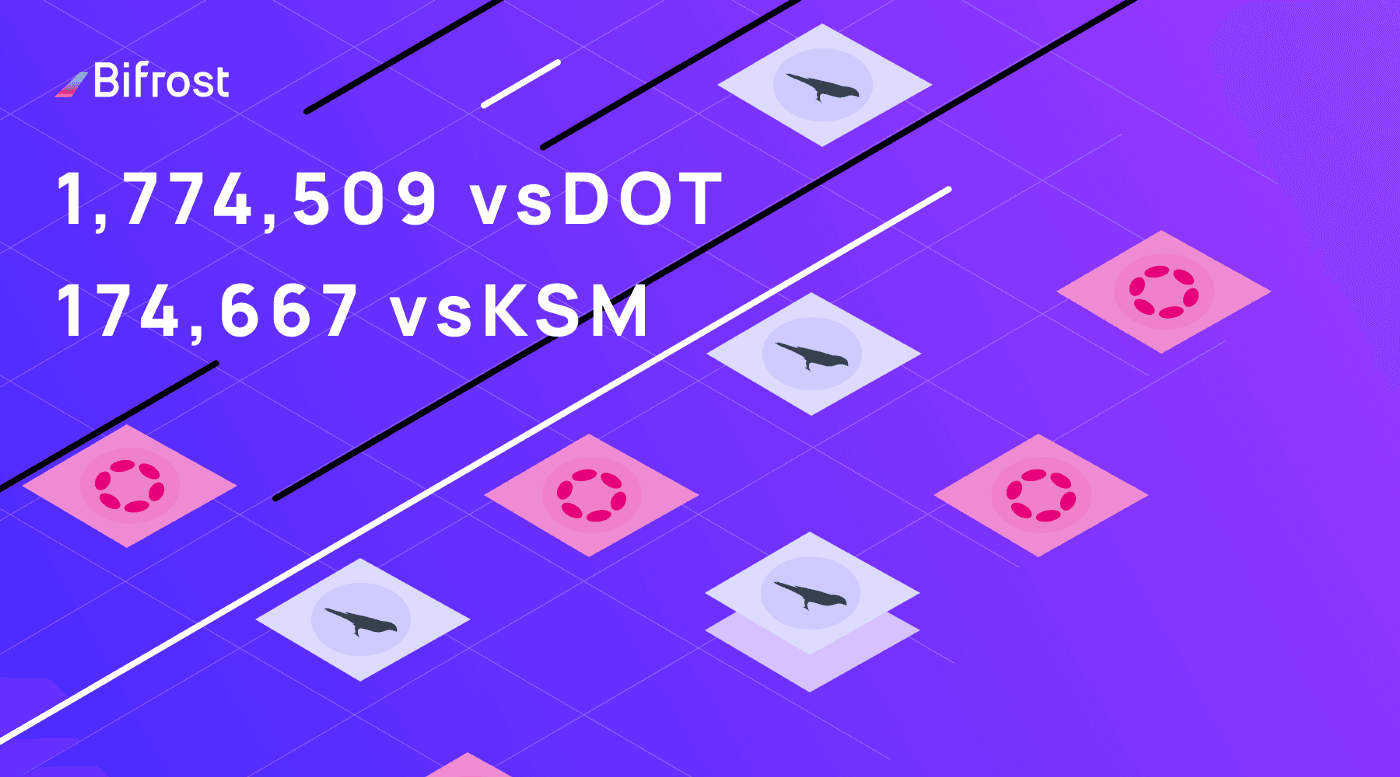 2022 / 10 / 20 13:43
2022 / 10 / 20 13:43 Bifrost
Bifrost
Bifrost is a Web3 infrastructure that provides cross-chain liquidity for Staking. It provides a decentralized, cross-chain Liquid staking service for multiple chains through the Cross-Chain Message (XCM). Since Bifrost went live on the Kusama parachain on October 21, 2021, it has minted a total of $137M in derivatives, provided $11.04M in liquidity, held 81,297 addresses in the chain, and completed 333,921 signed transactions.
Looking at Bifrost’s 2022 Roadmap, this is only a tiny step in the less than six months since Bifrost’s parachain went live. The more significant challenge for Bifrost is to create and capture value from a cross-chain StakeFi ecosystem. You can see the value catch of this cross-chain StakeFi in the Staking Liquidity Protocol (SLP) and the Slot Auction Liquidity Protocol (SALP), two Staking derivative liquidity protocols launched by Bifrost.
Staking Liquidity Protocol
Reward Competition under PoS Consensus
SLP is Bifrost’s Staking derivative protocol for Proof-of-Stake consensus chains such as the Polkadot ecosystem, Cosmos ecosystem, and other chains that bridge heterogeneous chains. The protocol provides cross-chain Stake interoperability calls through XCM broadcast across the consensus message communication format to mint fully decentralized Staking derivatives.
Since PoS consensus Token can generate rewards through Staking, it will inevitably lead to the following situation: the rewards in DeFi, GameFi, LearnFi, and other applications deployed in the ecology will compete with the rewards of Staking at the bottom of the chain. It will bring significant challenges to the ecological application development of the PoS consensus chain. With the emergence of high market cap PoS consensus chains such as Ethereum 2.0, Polkadot, and Cosmos, the ecological development problems caused by this conflict will become increasingly severe.
Indispensable middle layer
Bifrost SLP solves the conflict between the underlying consensus and the income of ecological applications by providing an intermediate layer of derivatives with interest. Eco-applications that support the SLP protocol can provide users with their business rewards while supplying them with Staking reward protection, enhancing the overall reward base. Users can indirectly participate in Staking by minting derivatives, lowering the threshold of user Staking participation. At the same time, the PoS consensus chain will get a higher staking ratio and improve the consensus security of the network.
Bifrost SLP is built on the XCM Cross-Chain Message format and can communicate with various parachains, contracts, and public chains across chains, enabling decentralized minting of derivatives. It also makes it easier to build the derivatives application scenario. Bifrost parachains will aggregate the derivatives process through cross-chain interoperability instead of scattering across different contracts in multiple chains, aggregating their liquidity and providing more competitive depth and slippage.
The validator set election process is completed by a standardized automatic strategy and the governance council, providing efficient, decentralized, and governable validator set election standards for various PoS consensus chains. Compared with Lido staking, which is currently the largest derivative of ETH 2.0, Bifrost’s advantages are mainly reflected in the cross-chain interoperability, liquidity aggregation, and governance standardization. As an indispensable intermediate layer for PoS consensus and its ecological application, Bifrost will capture value in staking reward generation, validator’s voting rights, and derivative liquidity fees.
Slot Auction Liquidity Protocol
Slot auction decisions and opportunity costs
SALP is Bifrost’s protocol for providing Polkadot and Kusama slot bidding derivatives. 9 Polkadot parachains and 11 Kusama parachains have been successfully bid on, with a total of 1,774,509 vsDOT and 174,667 vsKSM minted.

Polkadot leases security and cheapness to other parachain projects through slot auctions. It provides secure sharing and a set of cross-consensus message protocols for parachains to facilitate arbitrary message communication between parachains, relay chains, and external chains.
To enjoy this service, parachains need to provide a two-year DOT liquidity lock as a leasing fee. For liquidity and the scale of cold-start funds, parachains often pay community users the interest for this part of the locked DOT by distributing tokens.
Therefore, the slot auction forms a StakeFi economic model with a three-way game among Polkadot, parachains, and community users. Whether the tokens paid by parachain projects bidding for slots can outweigh the opportunity cost (price fluctuation, Staking revenue) lost from locked DOT becomes the key to whether community users can profit from slot bidding.
Therefore, the two-year opportunity cost is brought by locked DOT needs. It has to be decided at the moment of slot bidding, which brings a vast difficulty to the decision. The threshold decision also prevents a large number of new users from continuously participating in slot bidding. At this time, the question of reducing the difficulty of user decisions and lowering the opportunity cost of locked DOT has created a considerable demand and value.
The new game of liquidity bonds
Community users can participate in the auction of slots for specified parachain projects through SALP. At the same time, DOT that initially needs to be locked for two years can be mint into vsDOT and vsBond with liquidity through SALP, where vsDOT is the redemption certificate for locked DOT and vsBond represents the time when the redemption certificate is opened for the redemption.
By combining vsDOT with vsBond at maturity, the DOT can be redeemed 1:1. In contrast, vsBond has a different discount due to its different maturity, representing the discounted gain paid to the liquidity provider. It creates a vsDOT bond market that satisfies both the arbitrage needs of the liquidity provider and the liquidity needs of the community users.
Based on current observations of the SALP protocol operation, the vsDOT two-year bonds are mint through slot bidding, of which the discounted annualized rate can reach up to 40%. At the same time, because the bond is fully reserved. There is no acceptance risk, a reliable, low-risk, sustainable, long-cycle return that is impressively compared to other DeFi projects of the same risk level. The source of reward comes from the Polkadot slot auction through SALP, which indirectly allows more funds to participate in this ecosystem of Polkadot slot auctions. As a bond market aggregation platform, Bifrost will capture value from discounting, liquidity, and acceptance cycles.
Summary
According to the 2022 Roadmap, Bifrost will use SLP and SALP protocols to provide standardized cross-chain interest-bearing derivatives (vDOT, vETH, vFIL, vGLMR, vSOL, etc.) for Polkadot relay chains, parachains, and heterogeneous public chains bridged to Polkadot. It will lower the threshold of Staking for users, increase the ratio of multi-chain staking, improve the reward base of ecological applications, and create a positive cycle of StakeFi ecology with the empowerment of users, multiple chains, and eco-applications.
What is Bifrost
Bifrost is a web3 derivatives protocol that provides decentralized cross-chain liquidity for staked assets. Leveraging the cross-chain message (XCM) can provide cross-chain liquid staking services for multiple chains.
Bifrost has raised over USD 2M from top-tier venture capital firms by NGC, SNZ, DFG, CMS, and other institutions. In addition to being an early receiver of a Web3 Foundation Grant, Bifrost is also a member of the Substrate Builders Program and the Web3 Bootcamp.

